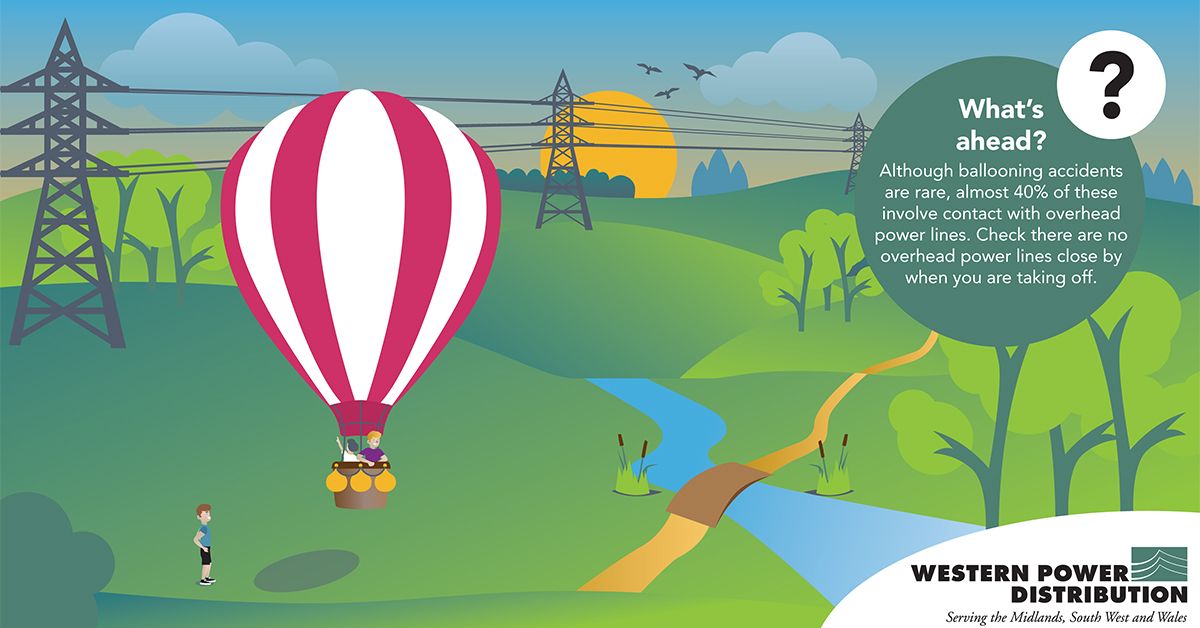Balloon users: stay outside the lines
Steer clear of electricity – that is the message to hot air balloon lovers who are being reminded of the dangers of flying too close to overhead power lines.

Although ballooning accidents are rare, almost 40% of those reported involve contact with overhead power lines, resulting in electric shocks, burn injuries and, in some cases, death.
Eddie Cochrane, WPD Safety Adviser, said: “While balloon accidents are relatively few and far between, it is important to follow some simple but vital rules to stay safe, such as carrying binoculars to spot overhead power lines and avoiding contact with any electrical equipment, as even low voltages can kill.
“What balloon users may not consider is that balloon envelopes, wires, ropes, fuel cylinders, hoses and baskets can all conduct electricity. Overhead power lines often carry extremely high voltages and are capable of cutting through materials such as balloon fabric like a plasma cutter.”
Top five tips on ballooning safety:
- Check there are no overhead power lines in the area from which you intend to take off.
- Make sure you have a pair of binoculars to spot overhead power lines when in flight.
- Do not fly deliberately close to overhead power lines.
- Civil Aviation Authority (CAA) maps may show power lines on pylons but don’t show other overhead power lines, such as those supported by wooden poles.
- If you spot an overhead power line when landing, do not focus on this line exclusively as there may be others.
For more information, visit our Ballooning Safety page here.
